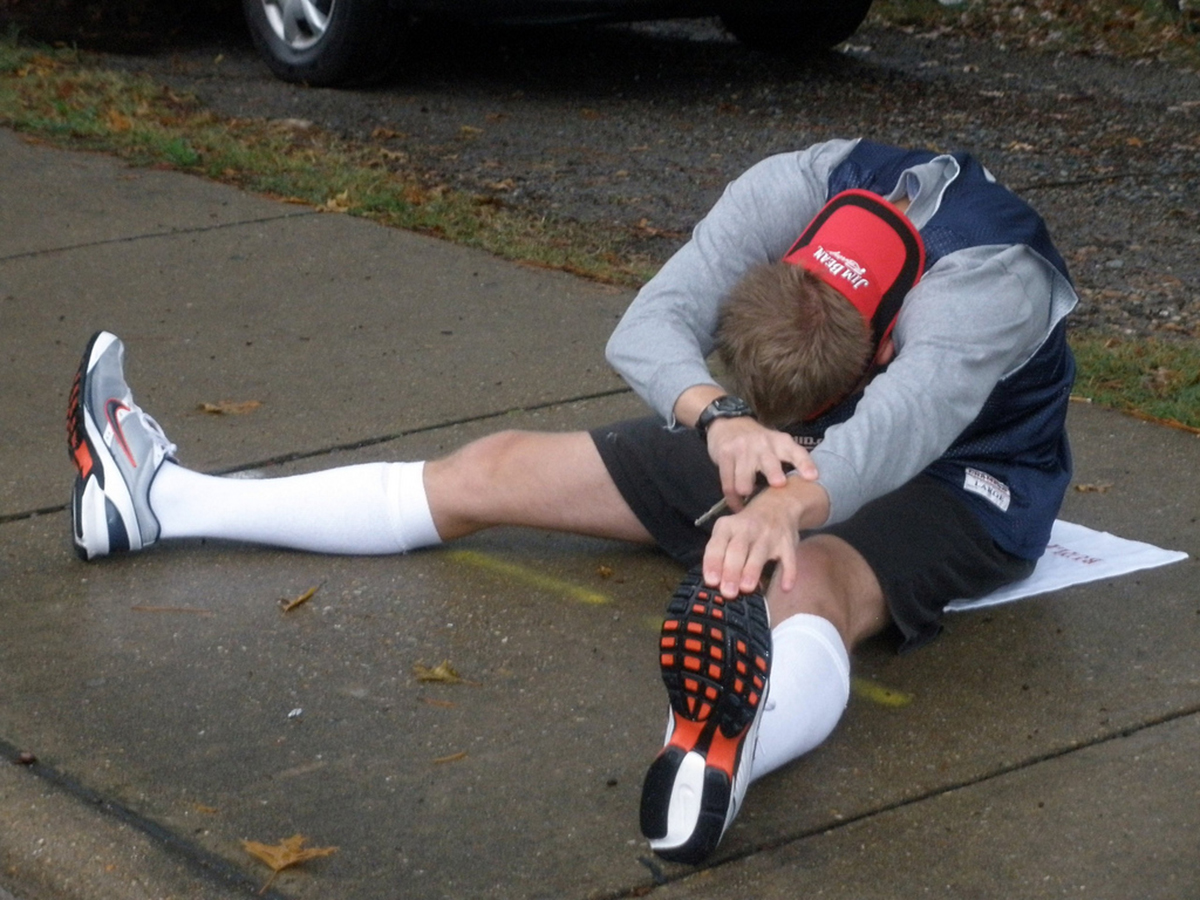Table of Contents
It's the perfect stretching tool, especially if you also have access to a wall. That's the way most people's houses are built, so we'll go with the assumption that you do.

Here's one great stretch you can do with a floor on a wall: lie on your back with your butt touching the wall and extend your legs up the wall. Ideally, your legs will be straight - if that's hard, keep your low back straight and bend the knees rather than let your legs 'suck' your back up the wall. Keep your tailbone on the floor!
Yes, you can stretch this way just standing and bending at the hips. But when you lie on the floor, the floor gently but insistently helps you to lengthen and straighten your spine. You can feel where you're out of shape, where one shoulder is higher than the other, and as you relax into the stretch, the floor stretches your spine out for you.
Another great stretch that the floor can help you with is side stretches. Most of us have crummy hip posture with tight, short hip flexors, weak external rotators and weak flutes. Then we go to the gym and get tight low backs and tight lats too. Well, there's a way to work on lengthening all of that.
Lie on your side on the floor, with the side to be stretched on the floor - let's say it's the right side. Now, stretch overhead with your right hand - act like you're pressing, don't just half-heartedly reach. At the same time, push the right foot away from you. The requirements to control your balance as you do the stretch mean it's effective on smaller muscles and the floor will 're-educate' you to a better alignment.
Finally, the floor can help you directly in your strength training goals. Strength training doesn't have to mean barbells, or even something that looks like strength training.
Chances are, unless your Judo sensei has time to kill at the end of class, the answer is 'never.' Yet doing rolls is actually a great way to improve your training outcomes.
Yes, I do martial arts - but I'm not just selling the thing I happen to have in my bag as the solution to your problems. I'm talking from personal experience, but also from referring to the work of serious strength coaches like Dan John and Tim Anderson. 'I'm a firm believer,' John says, 'that tumbling and rolling are the missing link in most people's training.' Anderson points out in his book 'Becoming Bulletproof' that 'there are more ways to roll than there are letters in the alphabet,' but it's really not so important how you roll as much as it is that you roll. Rolling gently aids spinal mobilisation - whether you're sitting or standing, your spinal joints aren't really getting my good movement. For most of us they only move when we slump! Yet your back is really a huge joint - 24 articulating vertebrae that need to move to be healthy. Let the floor guide them toward health. At the same time, rolling teaches your balance and mechanoreception systems to work in tune with your core musculature. Try rolling ands then immediately doing something else - like getting up onto your feet.
If you haven't rolled in a while, that will probably be harder than you think. You might be dizzy, wobbly, disoriented. Keep at it in small sessions for a week or so and you'll be surprised att he carryover into your normal life and your other work at the gym.
See Also: Don't Forget Your Back! Use These Moves To Strengthen This Area
You can throw some of these drills in between your lifts if that's your thing, or make a session of it if you'd prefer; start using the floor and you'll feel the benefits!
If you've tried any of the ideas in this article and you want to talk about your experiences, or you want to learn more, please get in touch with me in the comments section.
- Photo courtesy of K4dordy via Flickr: www.flickr.com/photos/8593364@N06/3190214572
- Photo courtesy of Tobyotter via Flickr: www.flickr.com/photos/78428166@N00/4018987877


Your thoughts on this